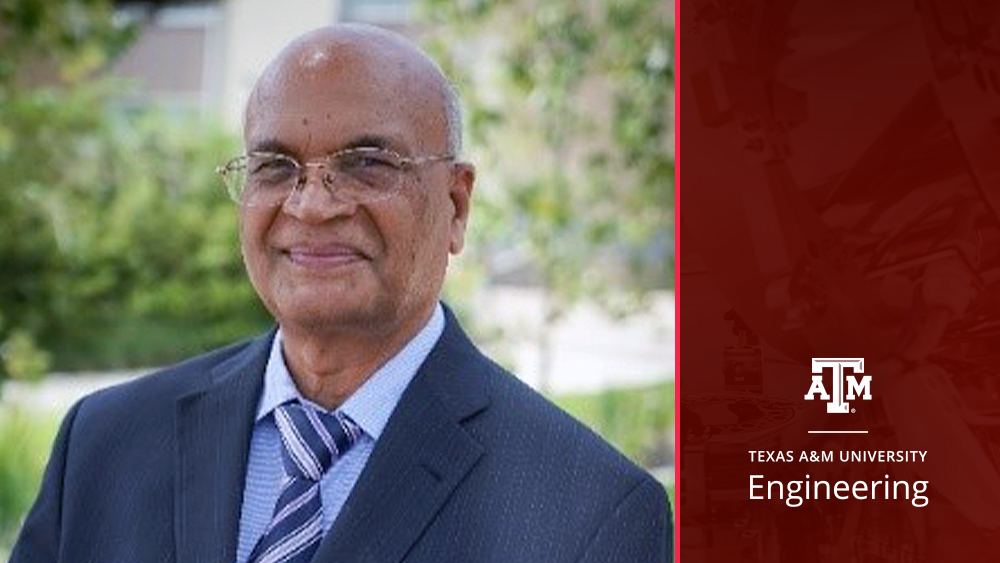
Dr. Keshawa Shukla, a subsea engineering professor of practice in the Department of Multidisciplinary Engineering at Texas A&M University, will speak at the American Society of Mechanical Engineers' (ASME) 40th International Conference on Ocean, Offshore and Arctic Engineering. The conference will be held virtually in June where he will discuss his upcoming research paper, “A New Transient Thermal Model for Predicting Cooling Temperature and Cooldown Time of a Subsea Pipe-in-Pipe Flowline System Transporting Waxy Hydrocarbons.”
Subsea engineering production systems are offshore wells located on the seabed in shallow, deep or ultradeep waters, controlled remotely from several miles away. The petroleum is extracted from the seafloor and brought to production platforms through undersea flowlines. When these complex systems need to be shut down for emergency purposes for several days or weeks, operational challenges may arise due to the flow assurance issues of solids depositions in the production systems, especially in deep water environments. If the correct procedures are not in place, this may pose severe challenges to restart the system for normal operations, causing a loss of production.
“Assume that we have a subsea production system in the Gulf of Mexico, for example, and due to a hurricane, we shut down the system,” said Shukla. “This can take two days, one week or maybe longer depending on situations. In that case, we need to shut down the system before a particular hour, before the formation of hydric walks and asphaltene. These are the solids that can clog the system, presenting challenges.”
The current practice uses commercial transient multiphase flow simulators to adequately determine cooldown time and corresponding thermal insulation requirements for retaining sufficient heat to prevent solid blockages in production systems in unplanned shut-in operations and normal operations. These systems work well at obtaining reasonable cooldown times for the assumed reservoir fluids, however, they are not cost-effective and require special skills.
“The most recognized commercial software for multiphase flow transient analysis of subsea production systems is very expensive, where a single license can cost to any engineering company upward of a quarter-million dollars along with the separate cost of annual maintenance for the license,” said Shukla. “The cost sometimes becomes difficult to justify for procuring for small companies/operators.”
His paper focuses on developing an analytical transient thermal model for determining the cooling temperature and cooldown time for emergency (unplanned) shut-in operation of a subsea pipe-in-pipe production system transporting waxy crude oils to the host facility. His method requires shutting the system down before the wax appearance temperature is reached in the flowline systems to prevent solid wax formation. His findings also show how to optimize dry insulation in pipe-in-pipe production systems and discusses different pipe materials with low thermal conductivity for various pipe configurations.
“This is a very simple model based on the rigorous thermodynamics, heat transfer derived from the energy of conservation and fluid dynamics where we are taking care of the transition of heat to create stable and steady temperatures and their variations during shut-in operations,” said Shukla. “In this paper, I applied that idea to the pipe-in-pipe flowline system, which is the first time anyone has done this. Using the limited flowline configurations and fluid properties, the model is accurate, efficient and economical for any subsea applications.”
Shukla will speak at the virtual conference, presenting these findings.